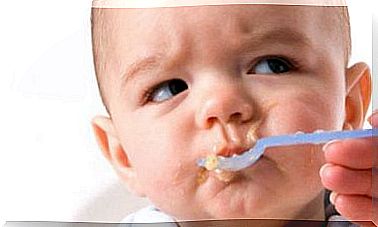Food Allies For Children’s Growth

Do you know what are the allied foods for children’s growth? See, in this article, some types of foods that cannot be missing from your children’s diet.
After children are one year old, they start to consume solid foods, an ideal time to experiment with different ways of cooking food and variety of nutrients.
At this stage, encourage them to try to find out what they like. Mainly vegetables, vegetables, fruits and proteins.
This is the time when children need to adapt to flavors and smells and expand their range of favorite foods.
The faster you introduce children to the world of flavors and allow them to discover what they like or dislike, you will prevent them from maintaining a dull, repetitive, excessive in fat and low in diet during school age or adolescence. nutrients.
Food Ideas for Children’s Growth

dairy products
Milk and its derivatives are an indispensable source of nutrition for children. Its consumption allows a very good bone development.
Cheeses, serums and dairy desserts are recommended foods in children’s diets. The daily digestion of two glasses of milk allows the absorption of 300 milligrams of calcium daily. Dairy products contain potassium and vitamin D, which facilitates the absorption of this nutrient.
Those who consume calcium during growth are less likely to develop diseases associated with deficiencies of the substance, such as osteoporosis.
Calcium intake is so important for children’s growth that, given lactose intolerance, it is recommended to consume alternative foods, such as vegetables or tofu.
Meat
Rich in essential amino acids, meat is one of the essential foods in our children’s diet. White meat is more recommended in everyday life than red meat.
Their consumption can be replaced by vegetables, but, however, they do not reach the level of nutrients that meats have.
So, give preference to the consumption of white meat: fish, chicken and seafood. Experts recommend taking two servings daily, that is, 200 to 300 grams per day.
Vegetable
Without a doubt, vegetables are essential. Even if children don’t love the look or taste of vegetables, it’s the adults’ task to transform them in order to make them desirable in the eyes of the little ones.
There are several ways to do this, such as making a fun presentation of the dishes or adding nice spices to the little ones.
Certainly, vegetables are allied to children’s health and growth. Because they are rich in vitamins and minerals, they prevent the little ones from being exposed to certain diseases.
- Broccoli
- asparagus
- Beetroot
- Pepper
- Carrot
- Watercress and spinach
fruit
It is best to consume fruits in their natural form. But we can also consume them in salads or juices.
In addition to refreshing, they have iron, zinc and other vitamins necessary for the healthy development of children.
In addition, fruits also prevent anemia and lack of energy in the little ones, help in the processes of concentration and your daily digestion fights diseases associated with age, such as flu and colds.
- Apple
- Banana
- Citrus: orange and lemon
- Mango
- Pineapple
- Strawberry

Grains and cereals
As a basis of food, grains and cereals are present even in vegetarian diets. They are needed to fill children with energy, give them a feeling of fullness and facilitate digestion.
Cereals, accompanied with dairy products (milk or yogurt), are a food that children enjoy a lot and facilitate the consumption of vitamins.
However, the diet should not only be based on them. Because a healthy eating habit is to teach children to consume grains too.
This way, their digestive system will not have specific problems, such as constipation.
It is recommended to eat grains and cereals for breakfast or lunch, as an accompaniment to salads or garnishes. Grains and cereals are rich in fiber and carbohydrates.
- Rice
- Wheat
- Corn
- Bean
- Quinoa
- Oat
good eating habits
- Eat at the stipulated times
- family meals
- Healthy parents with good eating habits will make the task easier. Example is always the best teaching
- Avoid giving incentives to children related to fast food
- Prepare varied, healthy and colorful dishes. This way, you will avoid creating food rejection in children.









